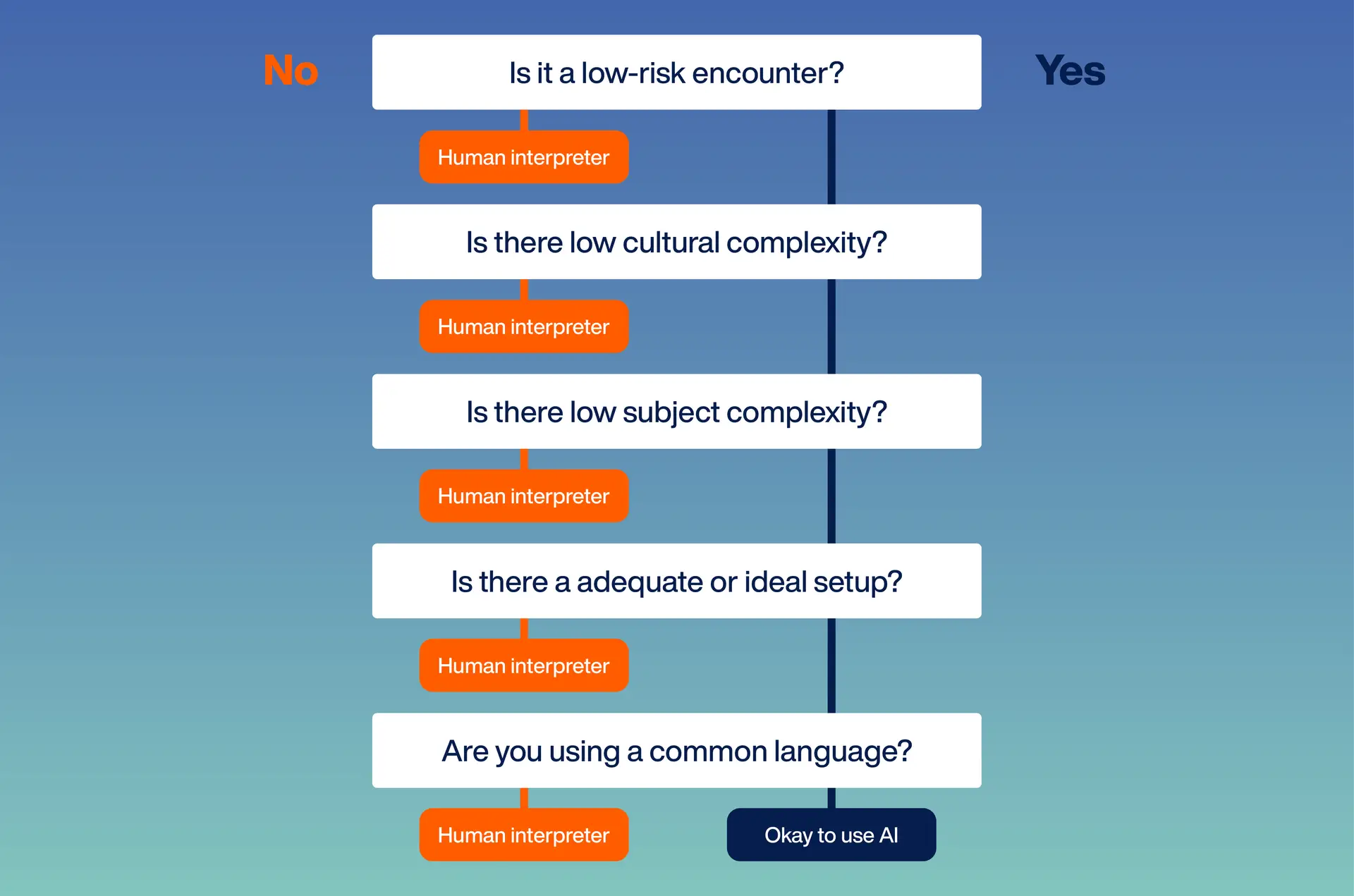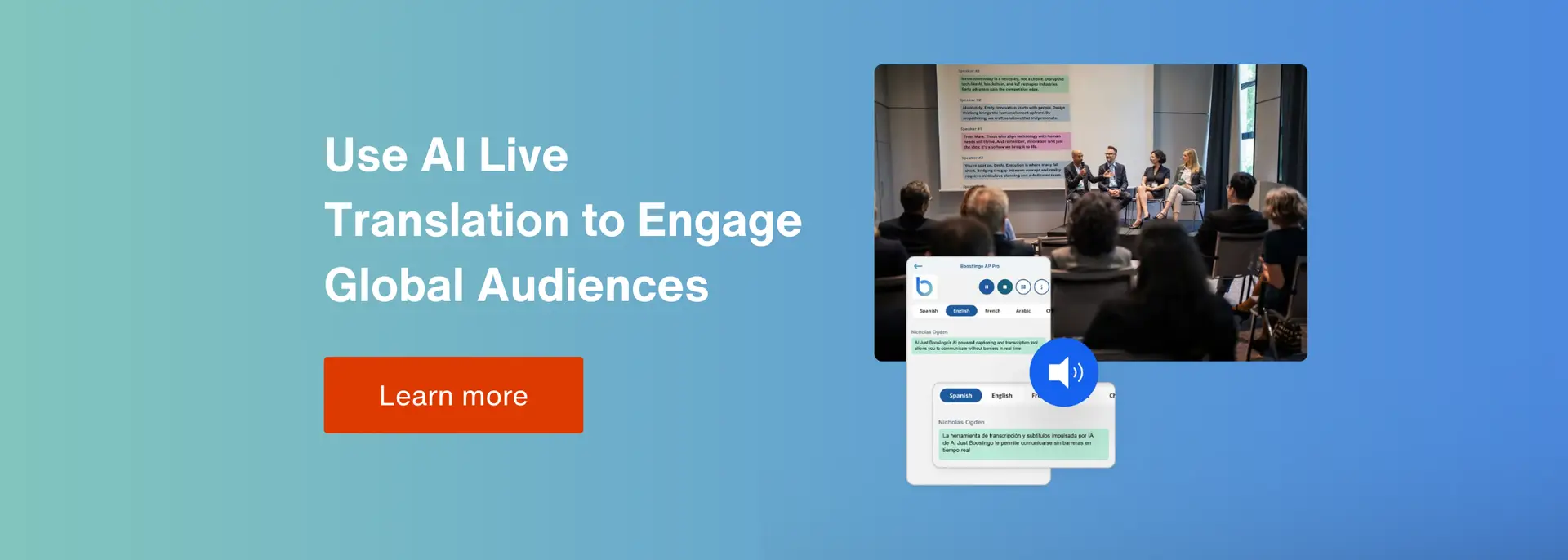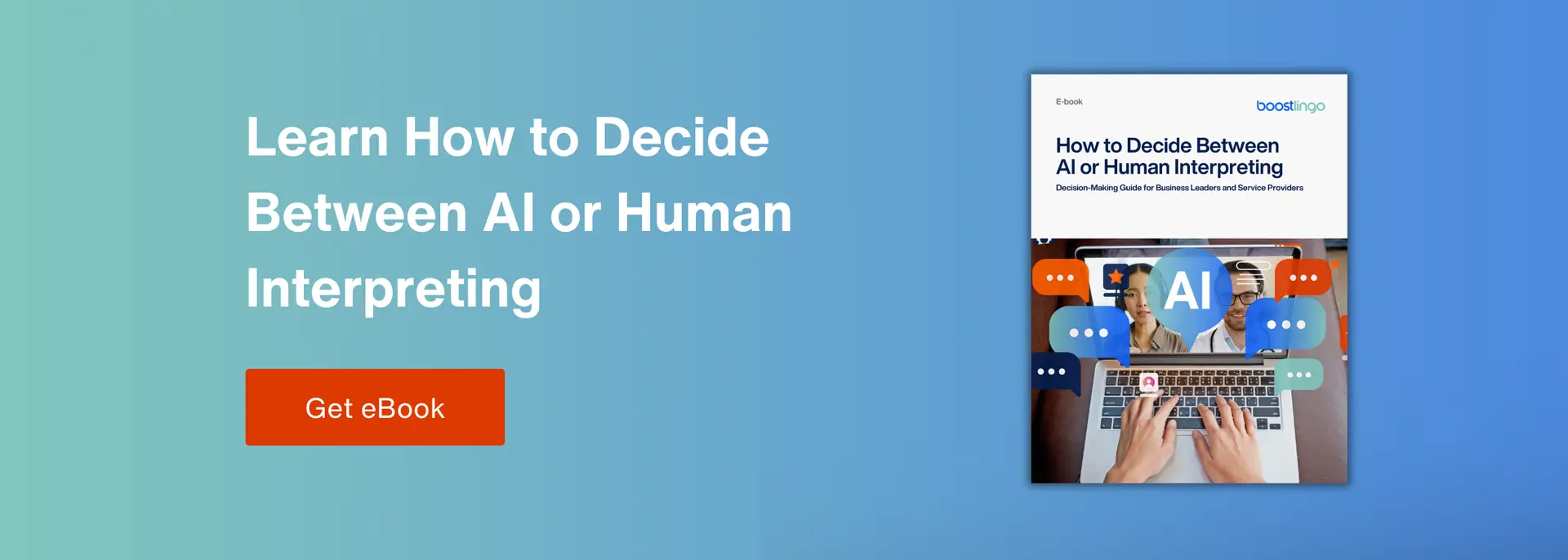Can you trust AI to translate your next conference or live event in real time? The technology is fast and cost-effective, but one mistranslated phrase can confuse your audience or undermine the experience you worked hard to create. In this article, we’ll discuss how to decide when it’s safe to rely on AI for live translation, where it delivers the most value, and when human interpreters remain essential.
What is Artificial Intelligence (AI)?
AI translation tools range from basic apps like Google Translate to advanced services such as Boostlingo AI Pro, which translates speech in real time during meetings and events. Live AI translation works in two ways:
-
Captioning. Spoken words are translated into text so participants can read captions in their preferred language.
-
Speech-to-speech interpreting. Audio is translated and spoken back instantly, letting listeners hear the message in their own language.
By processing speech, detecting languages, and generating captions or audio, AI helps event organizers bridge language gaps. But it is not foolproof, and knowing when to use it safely is critical, especially in technical or high-stakes settings.
Safety Guidelines for Live AI Translation
When deciding if AI is the right tool for live language translation, follow these steps:
Evaluate Your Use Case
Not all situations are ideal for AI translation. For example, healthcare, legal, or financial organizations may require better accuracy and cultural sensitivity than AI can deliver. They could also have additional compliance needs beyond language access laws, such as patient privacy in healthcare or official communication accuracy in government.
AI live translation can be a safe and effective option for corporate events or webinars where an individual’s well-being or access to services is not usually at stake. Large multilingual conferences also benefit from AI due to its scalability and speed in handling multiple languages simultaneously.
Decision Criteria
When deciding whether to use AI, consider factors like:
Low Risk and Minimal Ethical Concerns
AI translation works well in low-risk situations where ethical concerns are minimal. For instance, during a team meeting discussing general project updates, minor translation errors would have little to no impact. However, legal, medical, or financial discussions will require near-perfect accuracy, making human interpreters a better choice for these instances.
Routine Encounters with Low Complexity
AI can easily and effectively translate low-complexity events like marketing webinars, onboarding meetings, or general training sessions. However, events with technical subjects, less common languages, or culturally sensitive topics will benefit more from human interpreters with nuanced perspectives.
Adequate Technology and Security Setup
AI translation thrives in environments with solid technological infrastructure, strong security measures, and adherence to necessary regulations like the Health Insurance Portability and Accountability Act (HIPAA) in healthcare. For example, a virtual healthcare conference with reliable internet, clear audio, and a secure platform that complies with HIPAA ensures the accuracy and security of translations.
This compliance guarantees that sensitive information remains protected, offering peace of mind to users and organizers alike. However, for suboptimal audio conditions, human interpreters may provide greater accuracy.
Choosing the Right Approach for Your Event
Use this framework to assess your event’s risk level, content complexity, and security setup to confidently evaluate whether AI is the right tool for your needs.

Examples of Possible Safe Use Cases
- Corporate events with general content.
- Large, multilingual conferences where scalability is key.
- Webinars with straightforward topics that don’t require in-depth cultural or contextual understanding.
Learn about AI’s capacity to improve inclusivity in events on Boostlingo.
The Pros and Cons of Using AI for Live Language Translation
Pros
- Speed and Efficiency. AI can translate large volumes of speech almost instantaneously into 100 languages.
- Cost Effectivity. AI translation can be more affordable than hiring human interpreters, especially for large events.
- Scalability. AI can translate into multiple languages at once, making it ideal for large, international audiences.
Cons
- Accuracy Issues. AI may struggle with nuanced language or highly technical terms.
- Limited Cultural Understanding. Human interpreters are trained to adapt to cultural contexts and storytelling improvisation, whereas AI will often lack the subtlety required to provide meaningful translation for audiences.
- Security Concerns. Depending on the platform, there may be data privacy issues, especially when handling sensitive information in live language translation.
AI Live Translation Tools & Services
Boostlingo Events and Wordly are two leading AI-powered tools offering live translation services. They provide robust language translation and captioning features for meetings and events. These tools are designed to handle large multilingual audiences, making them ideal for conferences, webinars, and corporate meetings.
Boostlingo AI Pro stands out because it easily integrates into existing platforms, offers real-time translations with high scalability, and allows for the addition of human interpreters if needed, making it a trusted choice for many event organizers.
Get the Decision-Making eBook
AI interpreting technology is here, and business leaders and solutions providers like you are navigating tough decisions about whether or not to integrate it into your services. Download our practical guide for a clear framework to help you make informed choices on AI implementation. Get the free eBook!





